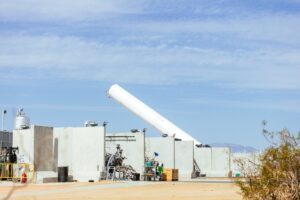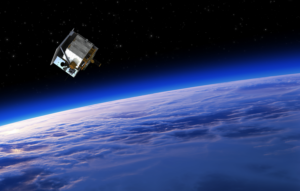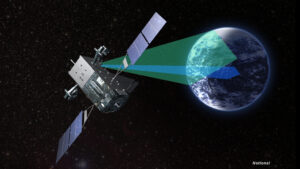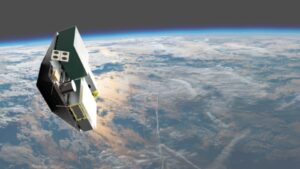Is Curiosity exploring surface sediments or lake deposits
Tuesday, 10 August 2021 07:53 In 2012, NASA landed the rover Curiosity in the Gale crater on Mars because the crater was thought by many scientists to be the site of an ancient lake on Mars more than 3 billion years ago. Since that time, the rover has been driving along, carrying out geological analyses with its suite of instruments for over 3,190 sols (martian days, equivalent to 3278 earth days). After analysing the data,
In 2012, NASA landed the rover Curiosity in the Gale crater on Mars because the crater was thought by many scientists to be the site of an ancient lake on Mars more than 3 billion years ago. Since that time, the rover has been driving along, carrying out geological analyses with its suite of instruments for over 3,190 sols (martian days, equivalent to 3278 earth days). After analysing the data, Advanced Space passes preparatory test for pathfinder mission to the moon
Tuesday, 10 August 2021 07:53 Advanced Space LLC., a leading commercial space solutions company, is overseeing the Cislunar Autonomous Positioning System Technology Operations and Navigation Experiment, or CAPSTONE, a NASA-supported mission to orbit the Moon. CAPSTONE is a small satellite, or CubeSat, that will be the first spacecraft to test a unique, elliptical lunar orbit that will support NASA's Moon missions under Artem
Advanced Space LLC., a leading commercial space solutions company, is overseeing the Cislunar Autonomous Positioning System Technology Operations and Navigation Experiment, or CAPSTONE, a NASA-supported mission to orbit the Moon. CAPSTONE is a small satellite, or CubeSat, that will be the first spacecraft to test a unique, elliptical lunar orbit that will support NASA's Moon missions under Artem Tissue engineering in space could treat age-related muscle loss on Earth
Tuesday, 10 August 2021 07:53 An investigation headed for the International Space Station (ISS) on Northrop Grumman's upcoming 16th Commercial Resupply Services (CRS) mission could someday enable rapid advancements in treatments for age-related muscle loss.
In an experiment funded by the U.S. National Science Foundation (NSF), researchers from the Palo Alto Veterans Institute for Research and Stanford University are le
An investigation headed for the International Space Station (ISS) on Northrop Grumman's upcoming 16th Commercial Resupply Services (CRS) mission could someday enable rapid advancements in treatments for age-related muscle loss.
In an experiment funded by the U.S. National Science Foundation (NSF), researchers from the Palo Alto Veterans Institute for Research and Stanford University are le Northrop Grumman completes CDR for Next-Gen OPIR missile warning mission payload
Tuesday, 10 August 2021 07:53 Northrop Grumman and Ball Aerospace successfully completed the Critical Design Review (CDR) for the Next-Generation Overhead Persistent Infrared (Next-Gen OPIR) Geosynchronous (GEO) mission payload. The completion of the Next-Gen OPIR subsystems and payload CDR meets aggressive U.S. Space Force and Lockheed Martin program objectives to ensure national security posture stays ahead of emerging glo
Northrop Grumman and Ball Aerospace successfully completed the Critical Design Review (CDR) for the Next-Generation Overhead Persistent Infrared (Next-Gen OPIR) Geosynchronous (GEO) mission payload. The completion of the Next-Gen OPIR subsystems and payload CDR meets aggressive U.S. Space Force and Lockheed Martin program objectives to ensure national security posture stays ahead of emerging glo Skykraft to begin launch of space-based air traffic management constellation
Tuesday, 10 August 2021 07:53 Skykraft will launch a 300kg satellite on SpaceX's upcoming Transporter-5 mission according to a recently signed launch contract. The 300kg satellite is a carrier for multiple early-phase Skykraft Air Traffic Management satellites that will form a global constellation of 210 satellites.
Skykraft is building a Space-based Air Traffic Management constellation to improve the safety and effici
Skykraft will launch a 300kg satellite on SpaceX's upcoming Transporter-5 mission according to a recently signed launch contract. The 300kg satellite is a carrier for multiple early-phase Skykraft Air Traffic Management satellites that will form a global constellation of 210 satellites.
Skykraft is building a Space-based Air Traffic Management constellation to improve the safety and effici Exotic matter is in our sights
Tuesday, 10 August 2021 07:53 Physicists have created a new way to observe details about the structure and composition of materials that improves upon previous methods. Conventional spectroscopy changes the frequency of light shining on a sample over time to reveal details about them. The new technique, Rabi-oscillation spectroscopy, does not need to explore a wide frequency range so can operate much more quickly. This metho
Physicists have created a new way to observe details about the structure and composition of materials that improves upon previous methods. Conventional spectroscopy changes the frequency of light shining on a sample over time to reveal details about them. The new technique, Rabi-oscillation spectroscopy, does not need to explore a wide frequency range so can operate much more quickly. This metho Huge rings around a black hole
Tuesday, 10 August 2021 07:53 A spectacular set of rings around a black hole has been captured using NASA's Chandra X-ray Observatory and Neil Gehrels Swift Observatory. The X-ray images of the giant rings have revealed new information about dust located in our Galaxy, using a similar principle to the X-rays performed in doctor's offices and airports.
The black hole is part of a binary system called V404 Cygni, located
A spectacular set of rings around a black hole has been captured using NASA's Chandra X-ray Observatory and Neil Gehrels Swift Observatory. The X-ray images of the giant rings have revealed new information about dust located in our Galaxy, using a similar principle to the X-rays performed in doctor's offices and airports.
The black hole is part of a binary system called V404 Cygni, located Small force, big effect: How the planets could influence the sun
Tuesday, 10 August 2021 07:53 A new theory supports the controversial hypothesis that the planets affect solar activity. It puts forward a mechanism by which the very small influence of the planets could exert its rhythm on such a large system as the Sun. If the theory is confirmed, it could possibly be used to predict solar activity more accurately. This would be of great interest, as large solar flares can cripple electron
A new theory supports the controversial hypothesis that the planets affect solar activity. It puts forward a mechanism by which the very small influence of the planets could exert its rhythm on such a large system as the Sun. If the theory is confirmed, it could possibly be used to predict solar activity more accurately. This would be of great interest, as large solar flares can cripple electron NASA's TESS tunes into an all-sky 'symphony' of red giant stars
Tuesday, 10 August 2021 07:53 Using observations from NASA's Transiting Exoplanet Survey Satellite (TESS), astronomers have identified an unprecedented collection of pulsating red giant stars all across the sky. These stars, whose rhythms arise from internal sound waves, provide the opening chords of a symphonic exploration of our galactic neighborhood.
TESS primarily hunts for worlds beyond our solar system, also know
Using observations from NASA's Transiting Exoplanet Survey Satellite (TESS), astronomers have identified an unprecedented collection of pulsating red giant stars all across the sky. These stars, whose rhythms arise from internal sound waves, provide the opening chords of a symphonic exploration of our galactic neighborhood.
TESS primarily hunts for worlds beyond our solar system, also know Thailand moving to enact Space Activities Act
Tuesday, 10 August 2021 07:04
The legislation aims to set up a National Space Policy Committee, chaired by Thailand's prime minister, to draw up the nation's space policies.
Living Planet Symposium 2022: Call for proposals
Tuesday, 10 August 2021 06:40
ESA is now accepting proposals for sessions at the next Living Planet Symposium – set to take place on 23–27 May 2022 at the World Conference Center in Bonn, Germany.
ABL, Astra, Relativity selected to compete for U.S. Space Force responsive launch contracts
Monday, 09 August 2021 22:41
ABL Space Systems Corp, Astra Space and Relativity Space will join a pool of launch providers that are eligible to compete for missions awarded under the U.S. Space Force Orbital Services Program (OSP)-4.
Simplification is key to space industry growth
Monday, 09 August 2021 20:01
The space industry needs to significantly simplify services for customers outside the sector to unlock its next phase of growth, space executives told the Small Satellite Conference Aug. 9.
Op-ed | Congress should support rapid procurement of advanced missile warning satellites
Monday, 09 August 2021 20:00
Congress should fully support the Next-Generation Overhead Persistent Infrared missile warning satellite program
In-Space Missions wins contract for British military smallsat
Monday, 09 August 2021 18:38
British smallsat developer In-Space Missions has won a contract from the U.K. Ministry of Defence to build a satellite to test optical communications.

